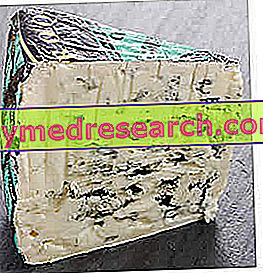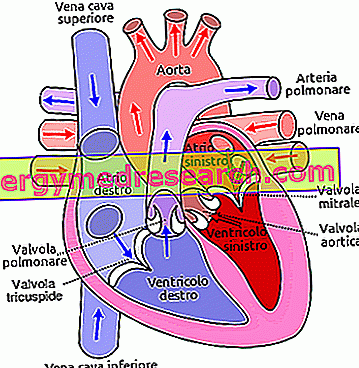Generality
Roquefort is a sheep's cheese that, like gorgonzola, is part of the blue cheese group .

Since 1925, Roquefort has enjoyed "the Appellation d'Or " (legal protection) and, in 1996, it was awarded the " Protected Designation Origin " mark (PDO, similar to our PDO).
The history of Roquefort is closely related to a popular legend; it is said that a shepherd, forgetting his white cheese together with the bread in a cave, on his return found them both moldy (the bread had contaminated the cheese). In fact, it is rather difficult to understand how Roquefort could have been born because, thanks to the detection of some archaeological finds, it was established that the relative dairy productions began 3, 500 years before the birth of Christ.
Production
Roquefort is a cheese made EXCLUSIVELY by maturing the white product in the caves of Roquefort-sur-Soulzon ( Aveyron ). It is produced ONLY from raw milk of Lacaune sheep, fed by grazing, fodder and cereals (at least 75% from the area of origin). The spores of the microorganism " Penicillium Roqueforti " are then inoculated with milk, a mold also used in the cheese making of camembert, brie and gorgonzola .
The production of Roquefort requires many phases, described with extreme precision in the specific disciplinary; these are: introduction of rennet in milk, inoculation of Penicillium Roqueforti spores, cutting of curd, drainage / draining, dry salting and " needling " (multiple micro drilling, carried out by hand or in an automated manner); this last step is essential to give the appropriate veins from the outside to the heart of the shape (a similar process is also applied to gorgonzola).
The cheese is then left to mature for at least 90 days (up to 9 months) in caves located in the village of Roquefort-sur-Soulzon (area bounded by the specification); these caves are characterized by constant humidity and temperature, limestone walls and natural ventilation provided by wind penetration in the " Fleurines " (cracks in the walls communicating with the outside).
In summary, the unique characteristics of Camembert essentially derive from 4 inimitable factors:
- use of Lacaune sheep milk
- Penicillium Roqueforti mold inoculation
and especially:
- needling process
- maturing (3-9 months) in limestone caves characterized by fleurines .
Gastronomic and nutritional characteristics
Roquefort is a strongly aromatic dairy product with a characteristic taste. It has bluish and / or greenish veins, similar to those of our gorgonzola; on the other hand, compared to the latter, the young Roquefort is ALWAYS of a more solid, uniform, elastic and less friable consistency; this characteristic tends to diminish in the seasoned product.
| Composition for 100g of Roquefort | ||||||||||||||||||||||||||||||||||||||||||||||||||||||||||||||||||||||||
 | ||||||||||||||||||||||||||||||||||||||||||||||||||||||||||||||||||||||||
Nutritional values (per 100 g of edible portion)
| ||||||||||||||||||||||||||||||||||||||||||||||||||||||||||||||||||||||||
Obviously, the substantial difference between Roquefort and gorgonzola consists of the raw material of origin, or milk; while the French cheese is a sheep product, the Italian cheese comes from cow's milk. Among other things, contrary to what one might imagine, gorgonzola (despite being vaccine based) has a VERY more intense and pungent taste and aroma than Roquefort; nevertheless, the energy, lipid and sodium intake are higher in French cheese than in the Italian dairy product.
Roquefort is a cheese that lends itself greatly to both tasting and to structuring complex recipes. In the first case it is suitable above all as a dish or as a dessert, while in the second hypothesis it excites the formulation of sauces for pasta dishes and fondues. There is no shortage of applications in various fillings such as, for example, the " CheeseCacke al Roquefort with pear jam (or pears in syrup) and Pecan nuts ".
Roquefort is an energetic, lipidic cheese, rich in saturated fatty acids and cholesterol; for these reasons it does not lend itself to the diet of the overweight subject, nor to that of the hypercholesterolemic.
Roquefort proteins are contained in good quantities, have a high biological value and should boast a prevalence of amino acids: glutamic acid, proline and leucine. The limiting amino acid is probably tryptophan (information obtained from the analysis of milk proteins of similar cheeses).
Being rich in sodium, Roquefort does NOT lend itself to nutrition against hypertension; on the other hand, containing a good portion of calcium, it can represent a dish to be consumed even twice a week (especially in the age of skeletal growth).
In Roquefort there are good levels of Riboflavin (vit. B2) and vit. A (retinol).



